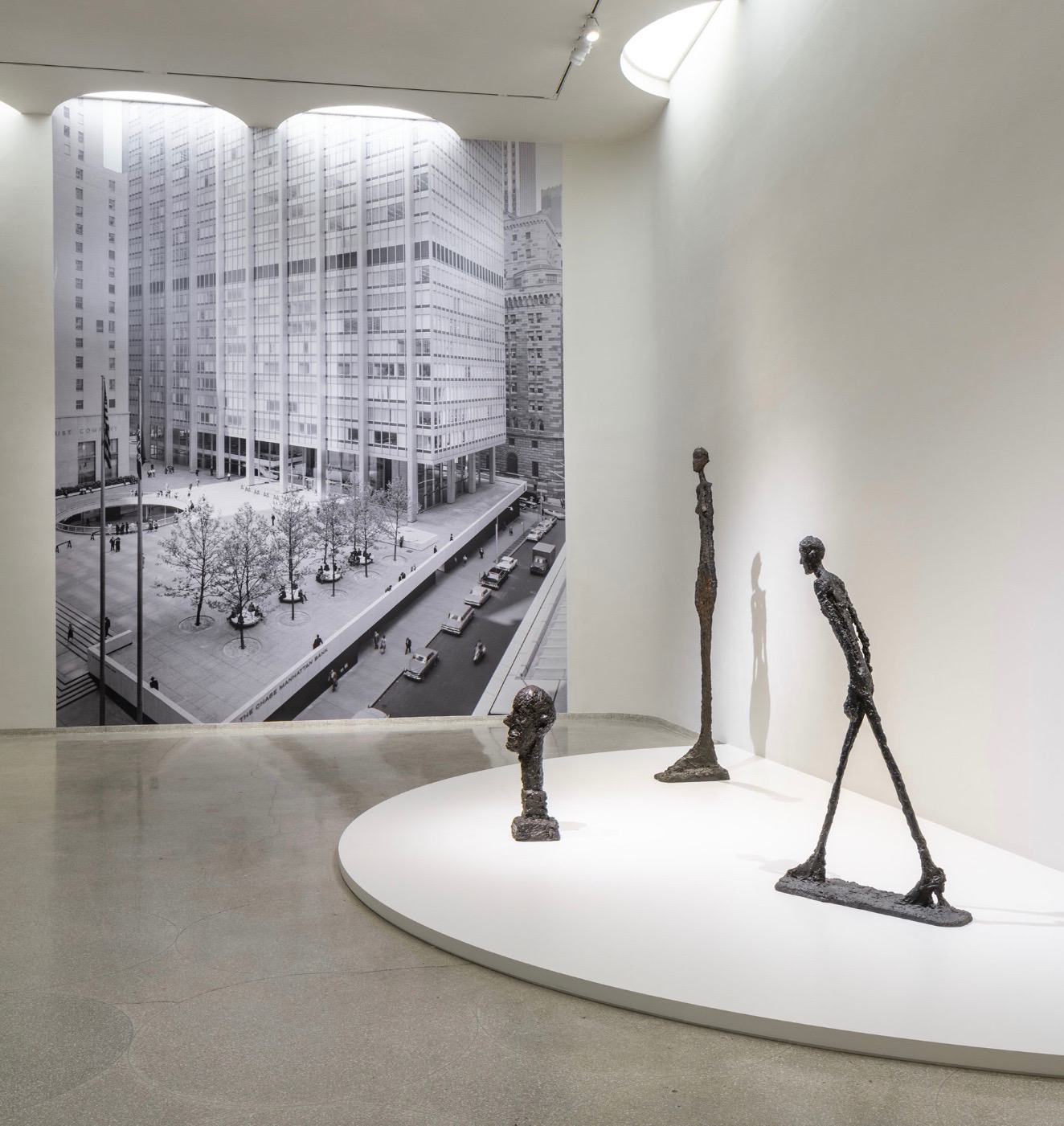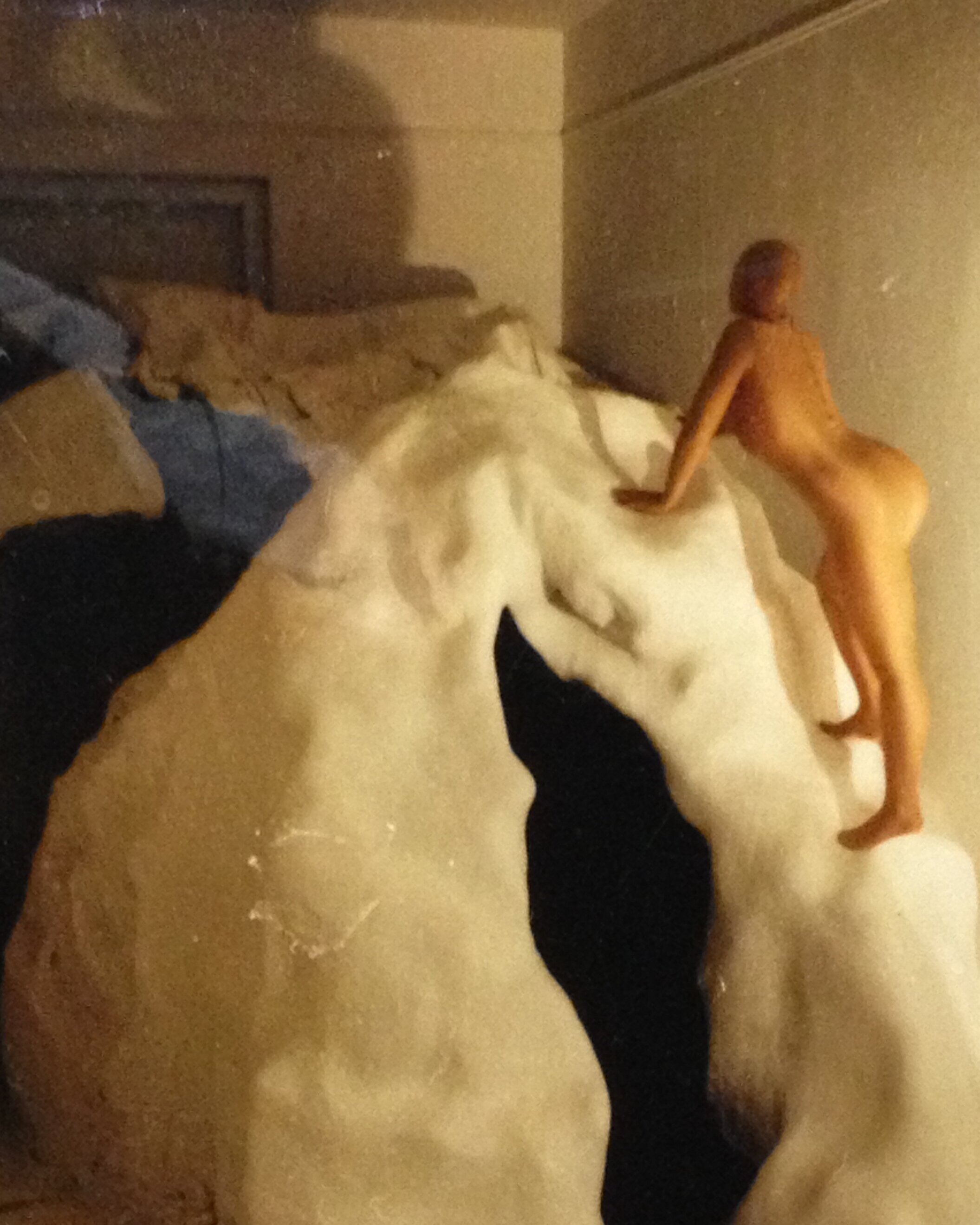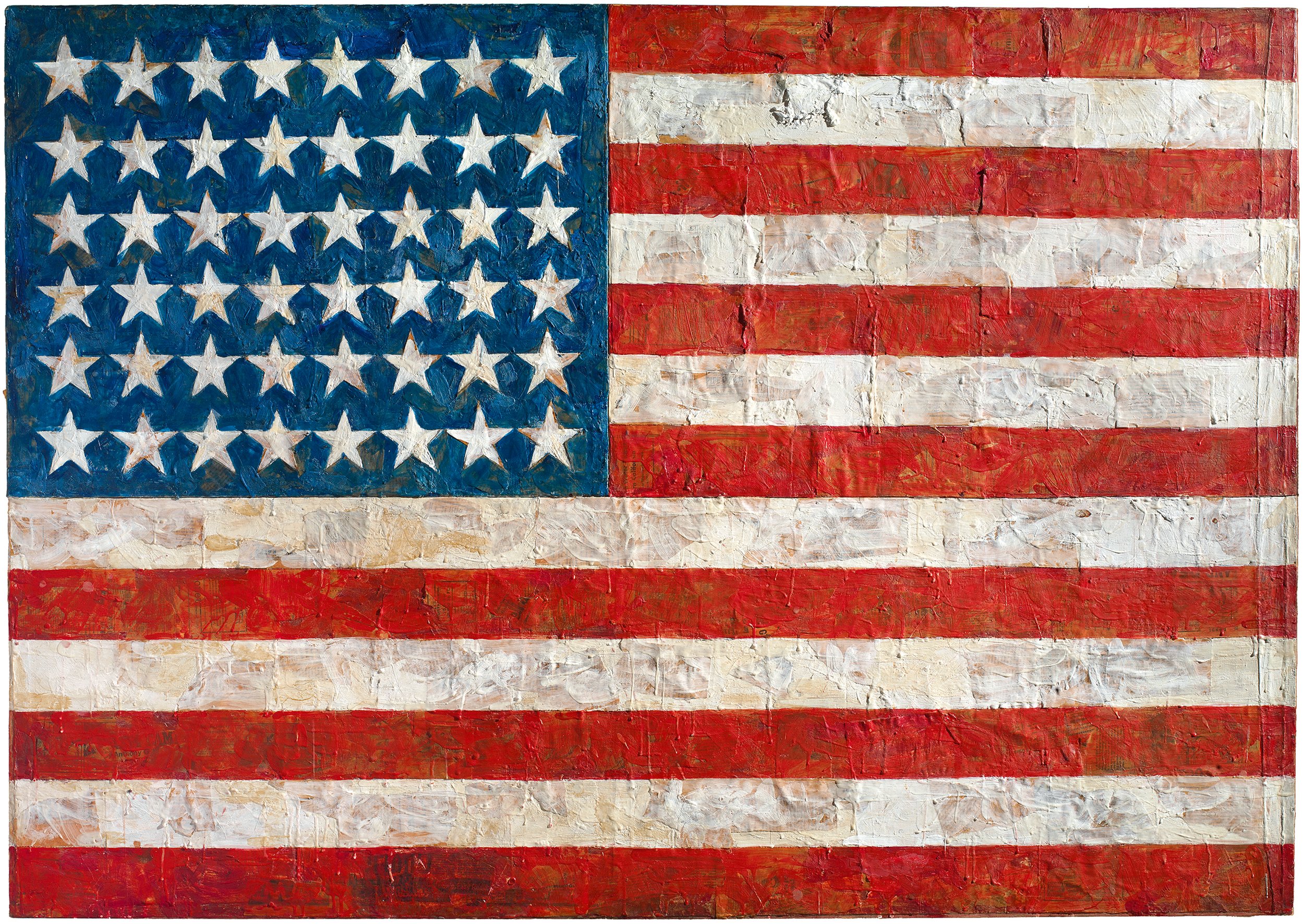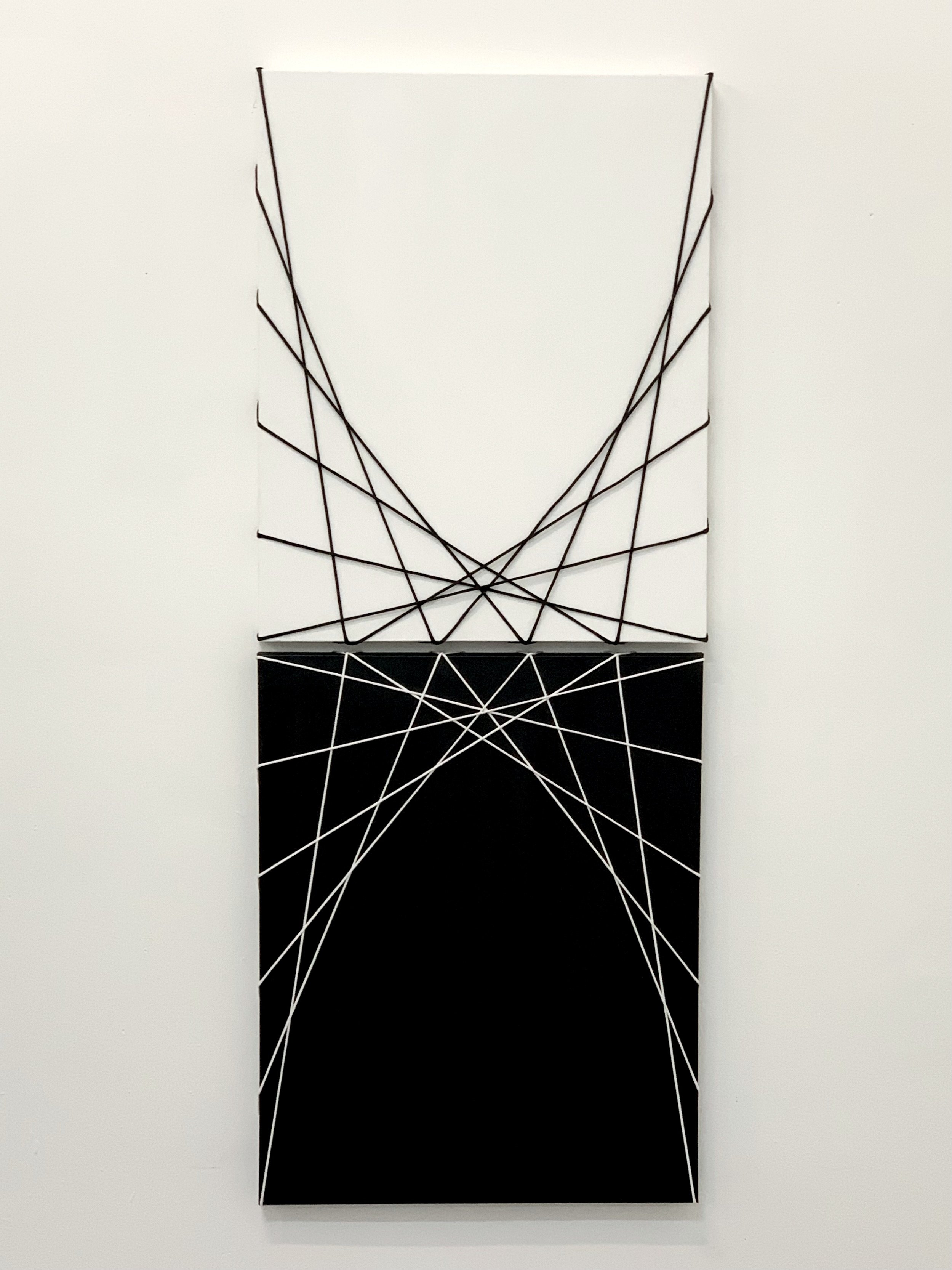Jean-Luc Moulène: More or Less Bone SculptureCenter
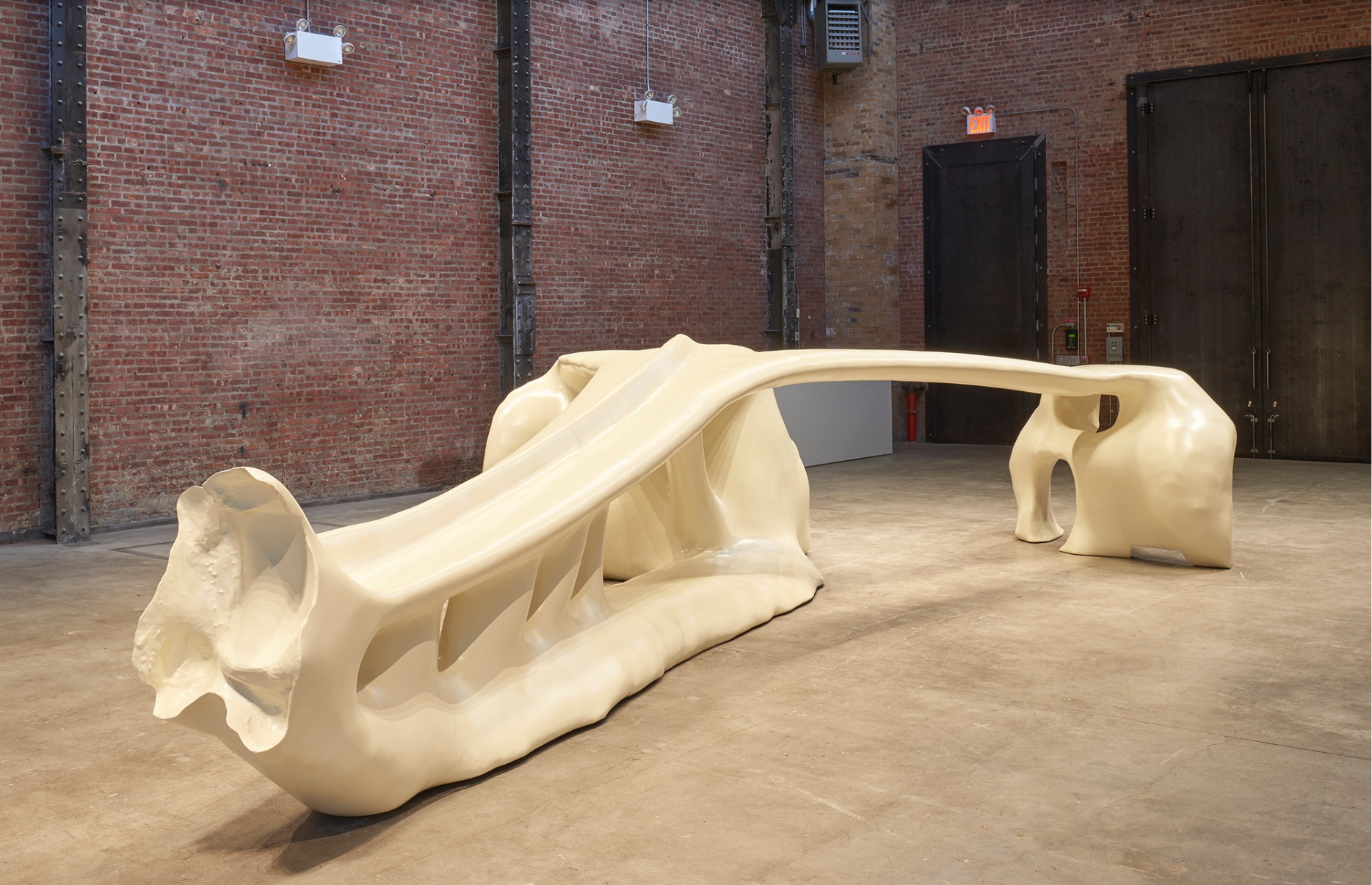
Jean-Luc Moulène: More or Less Bone
SculptureCenter Apr 29–Jul 29, 2019
By Mark Bechtel
Upon entering the exhibition, one is confronted by a single monumental sculpture steadfastly planted at the center of the room. Despite its size it remains human in scale. Two seams stand out prominently at the joints to disassemble the object for easier shipping. The form is programmed to meet fitness requirements for “a set volume, scale, terrestrial gravity, the material properties of fiberglass, and environmental conditions like wind and earthquakes”. In other words, this thing that appears like a massive mechanical joint is not neutral but designed to mediate social demands between the three absent forms.
Moulène, describing himself as a technicien libertaire, used state-of-the-art automotive engineering technologies from Aerospace Valley (France’s Silicon Valley) to determine the CAD/CAM fabrication by Digital Atelier (Mercerville, NJ) to the manually made outcome by Seal Reinforced Fiberglass (Copiague, NY) in order to produce a state-of-the-art product-sculpture. As a professor of product and industrial design, I have used this technology in design experiments myself. It can be a very effective tool for roughing out preliminary forms with superior lightweighting and improved material efficiency through an economy of form. Do more with less. If you image search online for topology optimization you will also find that, regardless of the tool’s application, the end results always appear to look, more or less, like bone. Joris Laarman’s much celebrated Bone Chair (2006) is a good corollary. The Dutch industrial designer applied topology optimization that simulated bone growth in order to produce a piece of furniture. In his words, “If Mother Nature wanted to create a chair, it would probably look something like the results we would get.”
Following a basic understanding of how this mathematical CAD tool works, it is evident the artist has distanced authorship to a degree. He assumed an editorial role to specify the constraints, with the participation of engineers, for the software to automatically generate a solution. Therefore, this form was determined at the instant the concept was finalized by the artist and his collaborators. Presented with a range of options in the software from the boundary condition (the block) to total dissolution, Moulène ultimately chose one from many pre-determined possible forms that the algorithm will always solve the same.
While this sculpture is described as a juncture and could be mistaken for an idea of integration as a process of connecting different things, I would argue that it is an object better aligned with differentiation instead. In mathematics, these two concepts are used to study change. While procedures of integration are commonly applied for multiplication with changing numbers like integrating speed and time to determine distance, or length, width, and height to determine area, this is not an object that leads to anywhere interesting when considering it’s volume and area. It is like a diseased version of an undulating Henry Moore from that point of view. We are also not viewing the representation of an object synthesized from different subjects that would be a transcendent figure of integration like a Henry Moore. This object does not represent something else.
Following Moulène’s clue, he describes conceiving of sculpture through surfaces and holes instead of Cartesian space. It is shape and proportion that takes precedence here, not volume and area. Distinctly different entities, the knucklebone, the sphere, and the spiral staircase, are globed together without diminishing their specificity. Opposite to integration, differentiation is used to determine the speed of a function by calculating instantaneous velocity. It is continuous division and cannot be confused with continually dividing entities like integration does by slicing up space to measure for area. Differentiation calculates derivatives, or the rate at which an output changes instantaneously with respect to the inputs. Derivatives can predict how a pattern will change, therefore enabling you to plot the past, present, and future to calculate maximums and minimums. By extension, topological derivatives are used for shape optimization.
While all of this becomes quite abstract, consider one of the greatest financial innovations of our time – derivatives as instruments for markets. The value of these financial contracts is based upon one or multiple underlying assets whether it be actual assets or other derivative contracts that offsets the value of the original. It’s a modular relationship, not a synthetic relationship, therefore enabling dissimilar entities to make short-circuit connections while remaining distinct. This makes them more or less exchangeable, hence more useful for hedging. It requires highly sophisticated computers to solve for such a level of complexity. However, in the markets the greatest risk of this financial instrument is that it becomes impossible to know any derivative’s real value due to its complexity. This is precisely what caused the 2008 financial crisis that nearly resulted in the collapse of the world financial system.
In this light, the sculpture is derived from a mutable relationship that is equivalent in all its variations by topological terms. It is an alien juncture given as a form of limitless possibilities while seemingly remaining under absolute control. After all, Moulène did name the three absent objects in the press release. The sphere, the spiral stairs, and the knucklebone are respectively described to represent the abstract, the constructed, and the organic. In his own words, “all objects belong to these three categories…” and he is making the form that “can attract all kinds of objects”.
However, to be cognizant of the prescient conditions that determined the form is also to recognize how temporal the final physical outcome is. It is more like a prototype to be tested than a final artifact. This is not a contingent object, but one fully determined version that could have been many others. It is both provisional and sufficient as a high-fidelity prototype. It does not communicate a concept as a representation but demonstrates through its potential, albeit ambivalent potential in this case. The real agency of this thing is not its execution, but rather the preemptive capacity for determining destiny. Unlike possibilities, which are incremental variations of what we already know, potential is immanent to something still in indeterminate variation. It often holds the promise to discover something unknown and to be liberated from repeating more of the same. However, such an aspiration suffocates under a foreclosed future resulting from sophisticated predictive tools of control. There is very little margin remaining to avoid always arriving at the best solution. During the talk, Moulène did acknowledge an error made by the engineers while computing his criteria, but perhaps the greater part of this margin is to become an active participant in the exhibition as demonstration. Perceiving the object as a prototype is also to inherently recognize that it invites the creative agency of the observer as much as the creator. While this kind of observer/participant claim is seemingly exhausted from being tautologically played out since the sixties, the key difference here is that Moulène’s work is an active entanglement of the abstract, the organic, and the constructed. These three categories could also loosely align with mind/matter/becoming or language/body/event. In order to grasp the unintelligible dimensions of his work, we have to follow, as Reza Negarestani described, his labor of abstraction. Moulène has also often claimed his protocol is just as relevant for art as it is for industrial design, hence we’re forced to recognize this object as a model for a tool of analysis rather than an artifact for contemplation.
For the MoMa exhibition, This Is For Everyone: Design Experiments for the Common Good, which featured Laarman’s Bone Chair, the provocative title was taken from a Tweet by the British computer scientist Tim Berners-Lee who invented the World Wide Web. The statement, of course, implicitly begs the question if that is indeed the case, and MoMa accounted for this through a concurrent online exhibition titled Design and Violence. In an interview for the former exhibition, Paola Antonelli, the senior curator of architecture and design, stated, "I keep thinking that designers in the future will become almost like philosophers." Taken seriously, the statement challenges design that is too often seduced by the new powers and novel outcomes afforded by cybernetics and silicon to meet short-sighted goals, defined largely by markets, even when it improves the lives of people. Is it not problematic to naturalize technology as Laarman does? Taken further, the implications of the statement go beyond positing yet another new design methodology, or body of knowledge, that again remains ensnared in the same double bind to produce and cause harm or abstain and wither. It would require grappling with difficult questions beyond the typical scope of the design discourse. For instance, how could design exit the vicious circle of power relations to become truly ethical, and what would it mean to truly design ethically? To design absolutely ethically would be to design for all living entities opposed to determining which should be accounted for. What if that required design to make without authority over anything else, or, after Melville’s Bartleby, to prefer not to meet what is demanded of it? All deeply complex questions of empowerment and control, and certainly pertinent for a human trajectory that would assume command of the rocks below to the skies above if it could.
Now long past the period of Foucault’s disciplinary control societies, Moulène’s work demonstrates a different set of control conditions for our era. Perhaps less an object riddled and fixed in contradictions, it is an elusive object of alternations and renascence. Presence and absence become confused. For example, I continually catch myself identifying the absences by their positive-form names – the knucklebone, etc., opposed to a proper identification of their absence. Moreover, why am I certain these impressions are absences in the first place? This form was determined through ones and zeroes, not manipulated material. It’s a perceptual/mental hole as much as a physical one. The shape for all of this object’s potential versions are equally present a priori, simultaneously unknown, yet already fully determined by nature of its process. Following its path of production forces a shift in registers from quantitative rationale to qualitative reasoning. Causal accounting gives way to a consideration of destiny. Scales of maximums and minimums are superseded by the instantaneous determination of all points. The scaleless CAD model is transposed into a physical human scale model. As all models are – it is simultaneously real and abstract. Clear design criteria produces unintelligible value. Ultimately, this exhibition as demonstration is a work for extrapolation instead of interpolation. As a function of mathematics, interpolation predicts based on known observations while extrapolation makes predictions that extend beyond what is known at a higher risk of producing meaningless results. Perhaps equal parts art, philosophy, and mathematics, this sculpture-product or prototype as analyzer requires stretching the bounds of familiar art discourse, and thought to say the least, in order to grapple with it.
In closing, I defer to an excerpt from the Appendix: On the Death of Man and Superman in Gilles Deleuze’s book on Foucault. He writes about his speculation for a “formation of the future”:
What would be the forces in play, with which the forces within man would then enter into a relation? It would no longer involve raising to infinity or finitude but an unlimited finity, thereby evoking every situation of force in which a finite number of components yields a practically unlimited diversity of combinations. It would be neither the fold nor the unfold that would constitute the active mechanism, but something like the Superfold, as borne out by the foldings proper to the chains of the genetic code, and the potential of silicon in third-generation machines, as well as by the contours of a sentence in modern literature, when literature 'merely turns back on itself in an endless reflexivity'.
The forces within man enter into a relation with forces from the outside, those of silicon which supersedes carbon, or genetic components which supersede the organism, or agrammaticalities which supersede the signifier. In each case we must study the operations of the superfold, of which the 'double helix' is the bestknown example. What is the superman? It is the formal compound of the forces within man and these new forces. It is the form that results from a new relation between forces. Man tends to free life, labour and language within himself. The superman, in accordance with Rimbaud's formula, is the man who is even in charge of the animals (a code that can capture fragments from other codes, as in the new schemata of lateral or retrograde). It is man in charge of the very rocks, or inorganic matter (the domain of silicon). It is man in charge of the being of language (that formless, 'mute, unsignifying region where language can find its freedom' even from whatever it has to say). As Foucault would say, the superman is much less than the disappearance of living men, and much more than a change of concept: it is the advent of a new form that is neither God nor man and which, it is hoped, will not prove worse than its two previous forms.
Contributor
Mark Bechtel is an artist, Assistant Professor of Product Design at Parsons School of Design, and occasional contributor to Battery Journal.
Jean-Luc Moulène, More or Less Bone (Formal Topological Optimization) (Paris-NY, 2018-19), 2018-19, installation view, Jean-Luc Moulène: More or Less Bone, SculptureCenter, New York, 2019. Fiberglass and epoxy paint. 63 x 334.6 x 177.1 inches (160 x 850 x 450 cm). Courtesy the artist, Miguel Abreu Gallery, New York, Galerie Chantal Crousel, Paris, and Thomas Dane Gallery, London and Naples. Photo: Kyle Knodell

